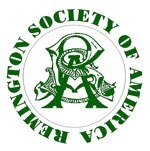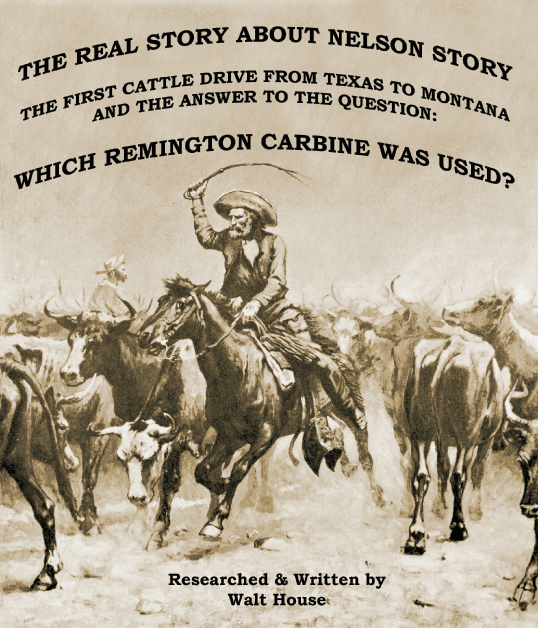
| Page 20 | 3rd Quarter 2013 |
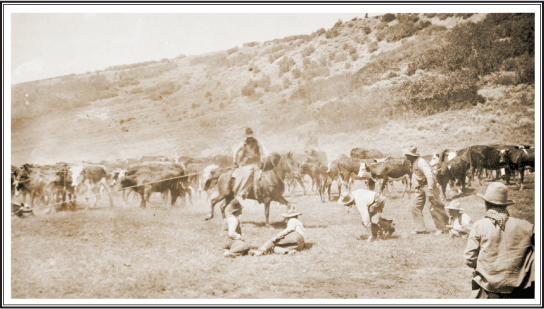
| This is a timeline that compares the development of both the Remington rolling block rifle and the caliber .50-70 cartridge with the progress of the Nelson Story cattle drive. Table 2 is a chronology of the development, production and sale of the Civilian Model Remington Split-Breech Carbines in caliber .56-.50 Spencer rimfire that was produced at the end of the Civil War. Nelson Story was born in 1838 in Meigs County, Ohio. His father, Ira Story, was of Scotch descent and In May 1860, Story drove freight wagons to Breckenridge by way of Denver. These were the first wagons ever taken to nearby Blue River, and they arrived in July 1860. He continued to drive wagons from Leavenworth to Denver and sold goods there until March 1863. That same month he returned to Leavenworth and married Ellen Trent. | They departed for Bannack, Montana to run a store, arriving there June 4, 1863. Later that month they got word of the Alder Gulch gold discovery. Story and two hired men with 14 pack animals followed the trail to the future site of Virginia City, built and staked claims. He went back to Bannack for Ellen and the supplies and returned to his claim. Nelson worked the claim and his wife had a good supply of dried fruit, flour and other staples, baked pies and bread to sell to the miners. Her pies sold for five dollars in gold dust! In July 1863, the upper part of Alder Gulch had a big gold strike. The Story’s moved to the summit for merchandising and claims through spring 1864. In the summer of 1864 Story opened his new mines and employed 50 men day and night until 1865, and he netted about $50,000! Nelson and Ellen Story settled in Bozeman. (endnote 3) In 1865 the thirty 0ne year old Nelson traveled day and night for one month with $30,000 in gold on the Ben Holladay’s Overland Stage Line via Salt Lake City to Denver and the Smokey Hill route on the Butterfield Overland “Despatch†to Atchison, Kansas. He shipped the gold by express to a New York bank. He traveled to Meigs County, Ohio to visit with his two brothers. After a short stay He continued on to New York City. A shortage of gold in the eastern banks allowed Story to sell his for $127.50, converting the $30,000 in gold to $40,000 in greenbacks. Story visited several eastern cities before returning to Leavenworth. He traveled around the country, attending some government sales and visited Civil War battlegrounds near Nashville. (endnote 3) |
| Page 21 | 3rd Quarter 2013 |
| Story approached two of his friends in Leavenworth about joining him on a cattle drive to Montana. They came to an agreement and planned a trip to Texas to buy cattle. In early 1866 they hired two men and departed Leavenworth with government sale wagons and stock. Story had sewn greenbacks into his coat. He located and purchased cattle a few miles north of the present location Fort Worth. The number is controversial and depends upon which account is believed, 6003, 1,000 (endnote 5) or 3,000(endnote 4) (endnote 5). The one account that this author tends to accept is from a 1912 interview of John Catlin who joined the drive in Laramie. He stated that it was 3,000 head (endnote 4). Story hired 21 Texas drovers for a total of 26 to 30 men for the drive. Several cattle drive historians have verified that this number of drovers was more than adequate to trail 3,000 head of cattle. The general rule was four drovers for each 1,000 head of cattle (endnote 6). | This would leave enough men to handle the freight wagons, chuck wagons and other duties on the train. The drive started in early spring and crossed the Red River into Indian Territory north of Dallas. They followedthe Neosho River to the Kansas border, probably just south of Humbolt, about 55 miles north of the present Kansas/ Oklahoma border. Note that in 1866, the most southern row of Kansas counties were also Osage Indian lands Many of the eastern Kansas counties were well populated, had established farms and ranches and were afraid of diseased cattle infecting their herds or trampling crops. Most of the southern border counties in eastern Kansas had “no cattle drive†ordinances. In mid June Story trailed the cattle two counties farther west. He tried to turn north through Greenwood County where he was arrested. |
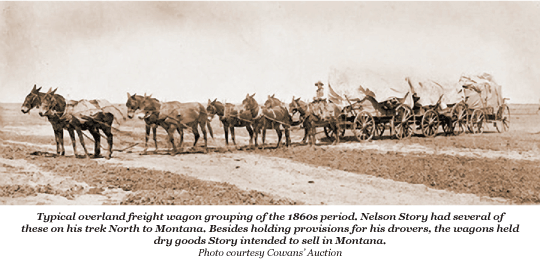
| This was reported in the June 23rd Burlington Patriot weekly newspaper. Story was taken to Eureka, the county seat, fined $75, and directed to drive his cattle out of the county. The Greenwood County Sherriff at that time was R. R. Turner. They trailed another sixty miles west to a point south and east of present day Wichita in Otoe (now Sedgwick) County. They went north through Marion County east of Moore’s Ranch and took the old Santa Fe Trail east to Burlingame where they turned north to Topeka. The drive crossed the Kansas River at Topeka on the pontoon bridge and trailed northeast to approximately twenty miles northwest of Leavenworth in the Delaware Nation, where the drovers camped and grazed the cattle. (endnote 3) Story and several men went to Leavenworth on July 4th for more freight wagons and supplies for his store in Virginia City. Leavenworth at that time had two daily newspapers reporting the Sioux uprisings. Both papers, The Leavenworth Evening Bulletin and The Leavenworth Conservative also had daily ads by E. Remington & Sons offering revolvers, rifles, muskets and carbines sold through local gun dealers. The Leavenworth City Directory listed seven gun dealers and gunsmiths.(Following map) Shows route (in green) taken by Nelson Story in 1866. |
| Page 22 | 3rd Quarter 2013 |
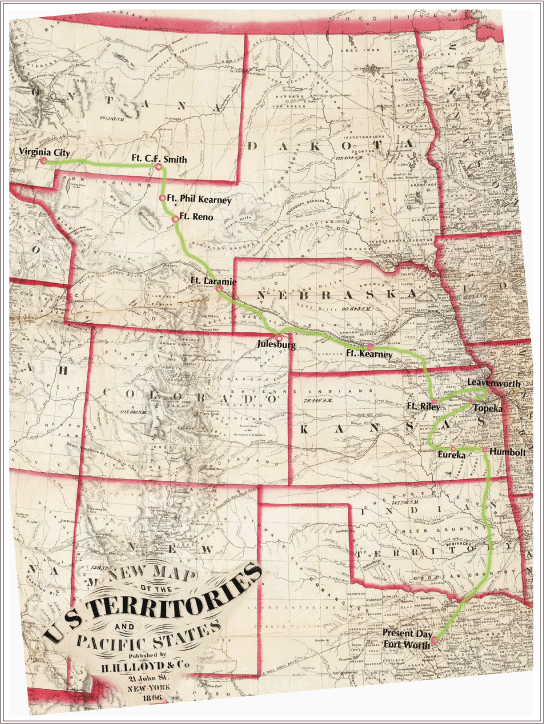
| Page 23 | 3rd Quarter 2013 |
| The Leavenworth City Directory listed seven gun dealers and gunsmiths! Some of their ads also appeared daily. Story, no doubt thinking about the Sioux uprisings, purchased thirty Remington breech-loaders with an ample supply of .56-50 Spencer rimfire ammunition. Unlike typical muzzle loading rifles with percussion cap, powder and ball, these single shot breechloaders used a rimfire cartridge and could be fired five to seven times a minute. Nelson Story himself always holstered a pair of “big†Navy revolvers (endnote 4). Some sources say that they were Remington-Beals (fendnote 7) Navy Revolvers in .36 caliber. Story purchased fifteen freight wagons, loaded them with groceries and merchandise and attached 150 head of oxen. They started for Montana on July 10, 1866, trailing the balance of the cattle loose with fifteen head of riding stock. | 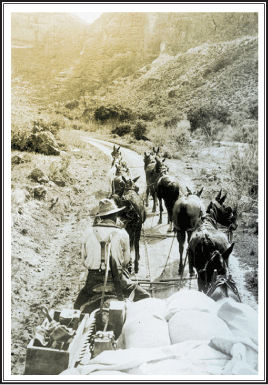 |
| They trailed back to Topeka and followed the Kansas River to just east of Fort Riley, turned north and followed the Big Blue River to the Little Blue and northwest into Nebraska. Near Fort Kearney they followed the Oregon Trail along the south edge of the Platte River and the Union Pacific construction past Fort McPherson. The South Plate was followed to Julesburg where the Bozeman Trail led them to Fort Laramie (endnote 3). There, Army officers tried to talk them out of continuing because of the Sioux uprisings led by Chief Red Cloud. While at Fort Laramie, the Story party was joined by a former Civil War Major, John B. Catlin and Steve Grover. Catlin and Grover were driving a freight wagon with mules to Bozeman and did not want to travel alone. Major Catlin was placed second in command. They continued on toward Fort Reno (endnote 4). |
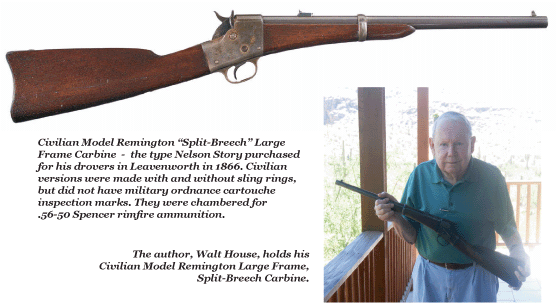
| Page 24 | 3rd Quarter 2013 |
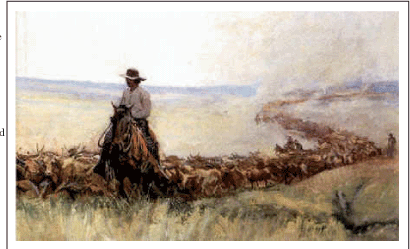
| The area was alive with hostile Sioux Indian activity and they were being watched all along the way. Indians were led by both Red Cloud and Crazy Horse. Story’s men were not attacked until about ten miles south of Fort Reno. It was a hit and run attack that stampeded the cattle and small bunch of them were stolen. The attack was beaten off when the men responded with their Remington carbines. The drovers stopped the stampede by quickly running the herd into a circle. “How many cattle did you lose?†Major Catlin was asked in an interview. “Lose, we didn’t lose a single head, we just followed those Indians into the badlands and took the cattle back.†Three or four of the cattle were injured and were later killed to furnish beef for the train. During the initial attack, William Petty was The following day the drive pushed on to within | Near the camp, Story noticed that one of his men was nearly surrounded and he turned back to help. Their trouble was relieved when about twenty drovers on foot, ran out of the camp firing their Remington carbines. Story, with about twenty of his men, mounted their horses and followed the Indians about fifteen miles in a running fight for three or four hours. They returned around midnight with all but three or four of the cattle (3) (4). About
After waiting two weeks, Story decided to proceed |
| Page 25 | 3rd Quarter 2013 |
| The soldiers with their muzzleloading Springfield rifles were only minimal help but they were welcomed to join the drive. Trailing at night and resting during the day worked well and they were attacked only two more times. They repelled the raids easily with their Remington carbines. They did lose one more drover. He had carelessly ridden too far ahead and was found killed and scalped. (endnotes 4 and 5) The Sioux had apparently become discouraged with the lack of success on their attacks. | 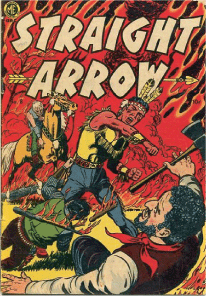 |
| Major John Catlin summed up the man Nelson Story in an interview with A.L. stone in 1912. “Even after three years on the skirmish line in the Civil War, I have never seen a fighting man like Nelson Story. He hunted a fight and when he found it he knew how to handle it. He never carried a rifle, but there were always two big Navy revolvers on his hips. He was always splendidly mounted and would ride like the wind. He would say, ‘Come on boys,’ and ride away. Of course, we’d follow him—we’d have followed him to hell—but accustomed as the Civil War had made me to following almost any dare devil leader, there were a good many times when Nelson Story had me guessing. The Indians soon got to know him. Also they feared him. They knew he would go through with whatever he undertook and they had no time to bother with him.†(endnote 4) The remainder of the drive was So which guns did Nelson |
|
| Page 26 | 3rd Quarter 2013 |
| Table 1. | |||
| 1866 TIME LINE | |||
| REMINGTON BREECHLOADERS & .50-70 CTGE | NELSON STORY CATTLE DRIVE | ||
| – EARLY SPRING – | |||
| SMALL & LARGE FRAME SPLIT-BREECH BREECH CARBINES ASSEMBLED FROM SURPLUS PARTS IN BOTH .44 & .50 RIMFIRE CALIBERS | STARTED NEAR OF FORT WORTH, TX | ||
| – JUNE 1866 – | |||
| FOLLOWED NEOSHO RIVER NORTH THROUGH INDIAN TERRITORYCATTLE DRIVE DIVERTED WEST BY KANSAS JAYHAWKERS | |||
| – JUNE 14, 1866 – | |||
| SUMMER & FALL, E. REMINGTON & SONS ADS IN LEAVENWORTH DAILY NEWS PAPERS INCLUDED CARBINES [NO U.S. GOVT. SURPLUS SALE OF REMINGTON CARBINES UNTIL NOVEMBER 1870] | NELSON STORY ARRESTED BY GREENWOOD COUNTY SHERIFF AND TAKEN TO EUREKA AND FINED $75 AND THE CATTLE DRIVE WAS ORDERED TO PROCEED FARTHER WEST (BURLINGTON PATRIOT – JUNE 23rd) | ||
| – MID-JUNE 14, 1866 – | |||
| 7 DIFFERENT GUN DEALER ADS IN BOTH LEAVENWORTH DAILY NEWS PAPERS & CITY DIRECTORY | TRAILED WEST & NORTH TO SANTA FE TRAIL, CROSSED KANSAS RIVER AT TOPEKA ON ON PONTOON BRIDGE | ||
| – JULY 1866 – | |||
| CAMPED 20 MILES NW OF CITY OF LEAVENWORTH | |||
| – JULY 4, 1866 – | |||
| STORY BOUGHT ADDITIONAL SUPPLIES, 15 FREIGHT WAGONS, 150 OXEN AND 30 REMINGTON LARGE FRAME, SPLIT BREECH CARBINES AND A QUANTITY OF .56-50 RIMFIRE AMMUNITION | |||
| – JULY 10, 1866 – | |||
| CATTLE DRIVE DEPARTED LEAVENWORTH | |||
| – AUGUST/SEPTEMBER 1866 – | |||
| FOLLOWED OREGON TRAIL | |||
| Page 27 | 3rd Quarter 2013 |
| – MID SEPTEMBER 1866 — | ||
| ARRIVED FT. LARAMIE, WYOMING. THE U.S. ARMY TRIED TO PURSUADE STORY NOT TO PROCEED NORTH BECAUSE OF HOSTILE SIOUX UPRISINGCIVIL WAR VETERANS, MAJ. J. B. CATLIN AND STEVE GROVER JOINED THE STORY PARTY | ||
| – LATE SEPTEMBER 1866 – | ||
| DEPARTED FT. LARAMIE ON BOZEMAN TRAIL | ||
| – OCTOBER 1, 1866 – | ||
| .50-70 CARTRIDGE APPROVED FOR MFG. AT FRANKFORD ARSENAL | TURNED BACK SIOUX ATTACK 10 MILES SOUTH OF FORT RENO. TWO WOUNDED SENT TO FORT RENO | |
| – OCTOBER 7, 1866 – | ||
| ARRIVED FORT PHIL KEARNEY ARMY ORDERED STORY NOT TO GO ON | ||
| – OCTOBER 20, 1866 – | ||
| IMPROVED REMINGTON CARBINE (ROLLING BLOCK) FIRST ADVERTISED IN THE ARMY & NAVY JOURNAL | DEFIED ORDERS AND LEFT FORT PHIL KEARNEY IN MIDDLE OF NIGHT WITH 26 MEN | |
| – OCTOBER 29, 1866 – | ||
| TWO SIOUX INDIAN ATTACKS BEATEN OFF, STOLEN CATTLE RECOVERED LATER THAT NIGHT | ||
| – NOVEMBER 1866 – | ||
| CONTINUED ON BOZEMAN TRAIL INTO MONTANA TERRITORY | ||
| – DECEMBER 3, 1866 – | ||
| ARRIVED NEAR BOZEMAN, AND LEFT CATTLE AT WHAT LATER BECAME KNOWN AS THE STORY RANCH | ||
| – DECEMBER 9, 1866 – | ||
| STORY’S FREIGHT WAGONS ARRIVED AT VIRGINIA CITY FOR THE STORY MERCHANTILE STORE | ||
| Page 28 | 3rd Quarter 2013 |
MILITARY MODEL SPLIT-BREECH CARBINE </font=”+1″>
CIVILIAN MODEL SPLIT-BREECH CARBINES
|
| Page 29 | 3rd Quarter 2013 |
